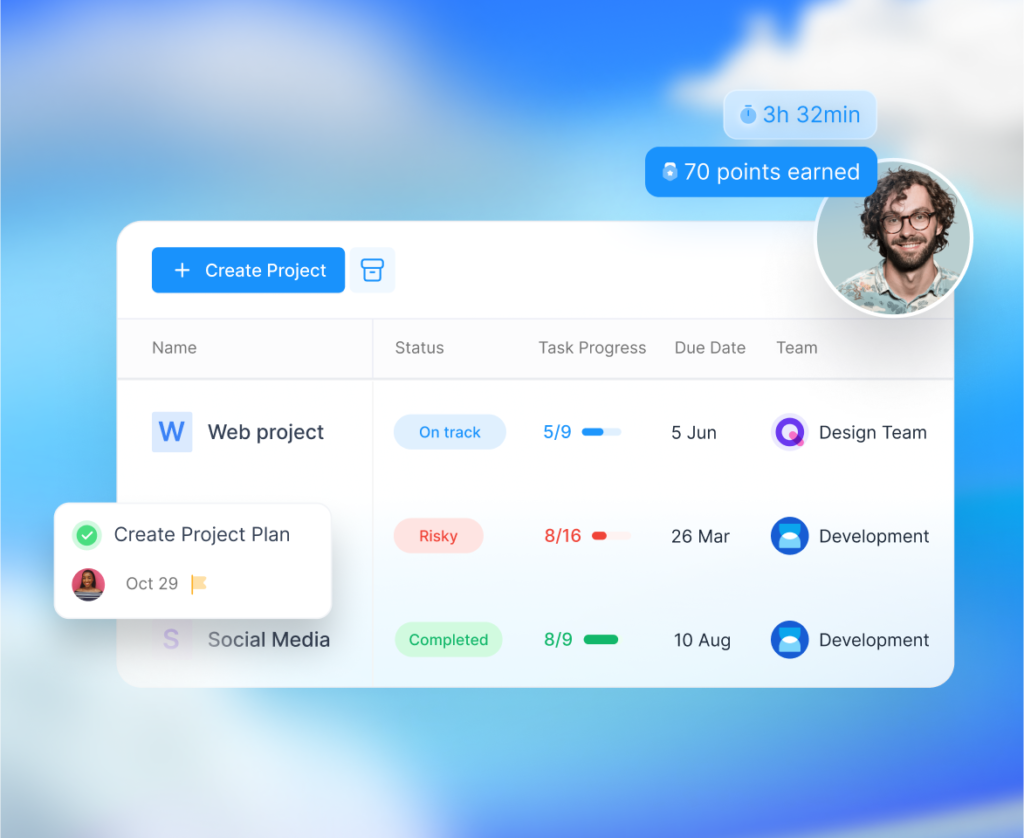5 Powerful Benefits of Using Agile in Project Management

In today’s fast-paced business environment, the ability to adapt quickly to changing circumstances is critical. Enter Agile project management—a methodology that has revolutionized the way teams plan, execute, and deliver projects. Gone are the days of rigid, one-size-fits-all approaches. Agile offers a flexible, collaborative, and customer-focused framework designed to enhance efficiency and produce high-quality results. But what makes Agile so effective? In this article, we’ll explore what Agile is, its benefits, and how it can transform your project management strategy.
What Is Agile Project Management?
Agile project management is a dynamic, iterative approach to managing projects that prioritizes flexibility, collaboration, and customer satisfaction. Unlike traditional project management methods, such as the waterfall model, Agile breaks down work into smaller, manageable increments known as iterations or sprints. This allows teams to focus on delivering value continuously rather than waiting until the end of the project to reveal results.
Key components of Agile include:
- Scrum: A framework that organizes work into time-boxed sprints, typically lasting 2-4 weeks.
- Kanban: A visual workflow management tool that tracks tasks in real time.
- Lean: A principle-focused method aimed at eliminating waste and maximizing value.
Agile is built on principles outlined in the Agile Manifesto, which emphasizes collaboration, responsiveness, and delivering working solutions over strict adherence to plans. This approach has gained traction across industries ranging from software development to marketing, making it a cornerstone of modern project management.

What Are the Benefits of Agile Project Management?
- Higher Quality Deliverables
One of the primary benefits of Agile project management is the delivery of higher-quality outcomes. Agile emphasizes testing and feedback at each stage of the project. This continuous evaluation ensures that errors are identified and corrected promptly, leading to a final product that meets or exceeds quality standards. Moreover, the collaborative nature of Agile encourages input from all stakeholders, resulting in a product that aligns more closely with user needs and expectations.
- Greater Transparency and Visibility
Agile methodologies promote transparency and visibility throughout the project lifecycle. Regular meetings, such as daily stand-ups and sprint reviews, keep everyone informed about the project’s progress. This openness fosters trust among team members and stakeholders, ensuring that everyone is on the same page. Transparency also helps in identifying potential issues early, allowing for timely interventions and course corrections.
- Increased Productivity and Efficiency
Agile project management enhances productivity and efficiency by breaking down tasks into smaller, manageable units. This approach allows teams to focus on completing specific objectives within a set timeframe, reducing the risk of burnout and improving overall performance. The iterative nature of Agile ensures that progress is continuously monitored, and any roadblocks are addressed promptly, leading to a more efficient workflow.
- Improved Collaboration and Communication
Effective collaboration and communication are cornerstones of Agile project management. Agile frameworks encourage frequent interactions among team members, stakeholders, and customers. This continuous dialogue ensures that everyone is aligned with the project’s goals and objectives. Enhanced communication helps in resolving conflicts quickly, fostering a more cohesive and motivated team environment. Want to learn how AI tools can support productivity in Agile environments? Check out this article on boosting productivity through AI.
- Enhanced Flexibility and Adaptability
In today’s fast-paced business environment, the ability to adapt to changes is crucial. Agile project management offers enhanced flexibility and adaptability, allowing teams to respond swiftly to changing requirements and market conditions. By prioritizing tasks and focusing on delivering incremental value, Agile teams can adjust their strategies and plans without significant disruptions, ensuring that the project remains relevant and aligned with business goals.

Agile Techniques and Practices
Agile encompasses a variety of techniques and practices that empower teams to work efficiently:
- crum: Organizes work into sprints and includes rituals like sprint planning, daily stand-ups, and retrospectives. Want a deeper understanding of how Scrum works in Agile teams? Learn more in our dedicated guide on Agile project management with Scrum.
- Kanban: Visualizes work in progress to optimize flow and identify bottlenecks. For a closer look at Kanban and how it improves team workflow, check out our post on the Kanban methodology.
- Retrospectives: Encourage teams to reflect on past performance and identify areas for improvement.
By embracing these practices, organizations can foster a culture of continuous improvement, ensuring long-term success.
Challenges of Implementing Agile
While Agile project management offers significant benefits, implementing it effectively comes with its challenges. These hurdles often stem from resistance to change, inadequate training, or misconceptions about Agile principles. Here are some of the key challenges organizations face when transitioning to Agile:
1. Resistance to Change
Change is hard, and Agile represents a significant shift from traditional project management methods. Teams and stakeholders accustomed to rigid structures may struggle to embrace Agile’s flexibility. The fear of the unknown or reluctance to adopt new practices can hinder the transition.
To overcome this, organizations must invest in change management strategies. Clear communication about Agile’s benefits and hands-on involvement of leadership can help address resistance.
2. Training and Upskilling
Agile requires a specific skill set that not all team members may possess initially. Understanding Agile frameworks like Scrum, mastering new tools, and adapting to iterative workflows can be daunting for those new to the methodology.
Providing comprehensive training, mentorship, and resources is essential for equipping teams with the knowledge and skills needed to succeed in an Agile environment.
3. Misconceptions and Improper Implementation
One common mistake is adopting Agile practices superficially without fully understanding the methodology. For instance, simply holding daily stand-ups does not make a team Agile. Misaligned expectations and inconsistent practices can lead to confusion and inefficiency.
A successful Agile transformation requires a thorough grasp of its principles, commitment to continuous improvement, and alignment of goals across all levels of the organization.
4. Balancing Flexibility with Accountability
While Agile encourages flexibility, this can sometimes be misinterpreted as a lack of structure. Teams may struggle to strike the right balance between adapting to change and maintaining accountability for deliverables.
Establishing clear goals, roles, and expectations can help teams navigate this challenge without compromising Agile’s core principles.
Agile Tools and Technologies
Several tools and technologies facilitate the implementation of Agile project management. Here are three popular ones:
Jira: Jira is a widely-used project management tool tailored for Agile methodologies. It provides comprehensive features for planning, tracking, and managing sprints. Teams can create user stories, track progress, and generate detailed reports using Jira. Its integration capabilities with other software and tools make it a versatile choice for Agile project management.
Zoom: Zoom has become an essential tool for remote collaboration, offering high-quality video conferencing, screen sharing, and virtual meeting rooms. For Agile teams, Zoom facilitates seamless communication during daily stand-ups, sprint reviews, and retrospective meetings. Its reliable performance and ease of use make it a valuable asset for maintaining team connectivity and collaboration. If you’re managing Agile teams remotely, you might also want to review our guide on remote team collaboration.
Trello: Trello offers a simple and intuitive interface based on Kanban principles. Teams can create boards, cards, and checklists to visualize tasks and manage workflows effectively. Its flexibility makes it suitable for both small teams and large organizations.
Agile project management has redefined the way teams approach their work. Its focus on flexibility, collaboration, and customer satisfaction makes it an indispensable methodology in today’s fast-paced, ever-changing business landscape. Whether it’s through faster delivery of value, improved quality, or happier customers, Agile’s benefits are undeniable.
However, success with Agile requires more than just adopting new practices. It involves a cultural shift, ongoing training, and the right tools to support its implementation. For organizations willing to embrace these changes, the rewards are well worth the effort.
So, are you ready to make the shift to Agile and transform the way your team works?

